The Northrop F-89D Scorpion was a second generation all-weather jet interceptor armed solely with rockets and featuring an early afterburner.
Gallery:




Features:
- Recreated with blueprints
- United States Air Force bare metal livery
- Fairly realistic performance
- A cool cockpit that should be VR compatible
- One hundred and four Mighty Mouse rockets for you to re-enact the Battle of Palmdale
Nonstandard Controls:
- AG 1 Nose Steering
- Throttle>95%% for Afterburner
- VTOL for flaps
- Trim for trim
Notes:
- Thanks @ChiChiWerx for the USAF roundels
- Thanks @EZkel for the gunsight
- Sorry, no rear seat this time. Couldn’t find photos. On the bright side, lower part count :)
- How to use rockets (most) effectively: Search for and move to targets in AIR-TO-AIR mode. Approach bomber from behind. When 1.5 miles from the target, switch to AIR-TO-GND mode and fire rocket salvo, aiming with the cockpit gunsight. They are set to detonate after traveling approximately 1.5 miles. Alternatively, you can go for direct hits.
- The early afterburner isn’t very efficient and will guzzle your fuel, use it sparingly.
Background:
Interceptor aircraft were more important during the 1950s than at any time before or since. The destruction that even a single bomber could cause if armed with a nuclear weapon and not destroyed was vast. So how best to shoot one down? What about a whole formation of bombers? With the high speeds of jet aircraft, firing times were small and machine guns wouldn’t be able to cause enough damage in a single pass to down a bomber. Cannons were better, but they added weight and could carry less ammunition. Guided missiles were in their infancy and wouldn’t be ready for operational use for years to come. The answer, it seemed, was rockets. Although they were unguided, only a single hit would be needed to take down any aircraft. Their low weight and small size meant that large numbers of them could be carried, and a volley of rockets would likely land a hit against a large and nonmaneuvering target like a bomber. Produced as the Folding-Fin Aerial Rocket, or FFAR, and nicknamed Mighty Mouse, these rockets would go on to arm a number of interceptors throughout the 1950s.
One such interceptor was Northrop’s F-89 Scorpion. Designed as an all-weather interceptor to replace aircraft like the P-61 and F-82, the Scorpion had a troubled development. Early versions featured numerous issues, and the Air Force requested a number of changes to the design. Most of the changes were able to be implemented, and the Scorpion was introduced to service in 1950. The F-89D was the most produced version and was armed solely with 204 FFAR rockets. Paired with a powerful radar in the nose, and featuring an afterburner, it was an impressive interceptor, at least on paper. The Scorpion would never see combat, but history remembers it for another reason.
The Battle of Palmdale was the name given to the events that transpired when a runaway F6F target drone flew over southern California and two Scorpions were scrambled to intercept it. The Scorpions’ fire control system wasn’t working, as often happened with 1950s electronics, and they were forced to aim their rockets manually. In a series of attacks, the F-89s launched all of their rockets, a combined total of 208. They scored no hits. Their rockets did, however, start a number of brush fires on the ground that would take several days to put out. Other rockets rained down on the town of Palmdale and destroyed cars, sending shrapnel flying through windows and into houses. Miraculously, no one was hurt. As for the drone, for one final insult, when it finally ran out of fuel and glided down to the ground it severed a power line with its wing and disintegrated.
Although the Scorpion’s career was by no means glamorous, it did stay in service for 19 years as the backbone of the USAF’s interceptors. An impressive feat for an aircraft from an era when new fighters were being made every two years.
Specifications
Spotlights
- This craft is curated
- TheGoldenEagle55 3.9 years ago
- LarryTad 3.9 years ago
- Dragoranos 3.9 years ago
General Characteristics
- Successors 5 airplane(s) +7 bonus
- Created On Windows
- Wingspan 59.6ft (18.2m)
- Length 53.8ft (16.4m)
- Height 17.0ft (5.2m)
- Empty Weight 15,751lbs (7,144kg)
- Loaded Weight 28,505lbs (12,929kg)
Performance
- Power/Weight Ratio 0.499
- Wing Loading 45.4lbs/ft2 (221.7kg/m2)
- Wing Area 627.7ft2 (58.3m2)
- Drag Points 2023
Parts
- Number of Parts 349
- Control Surfaces 5
- Performance Cost 2,035

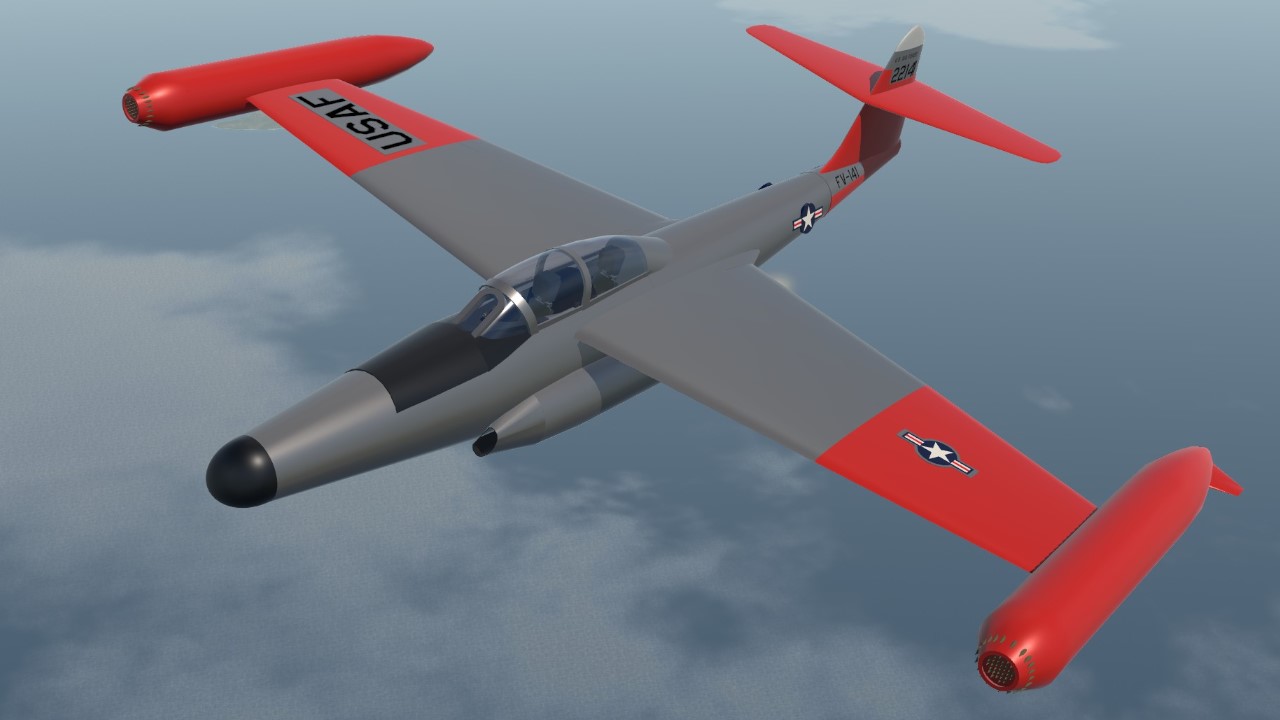
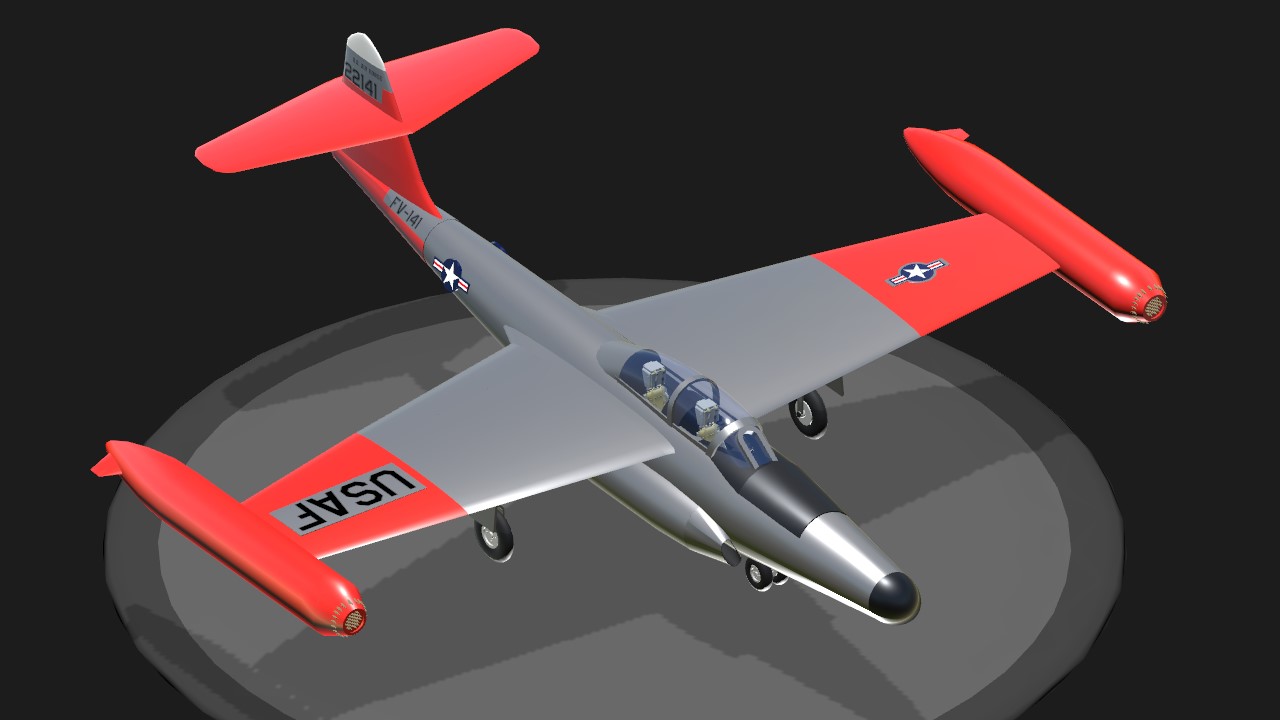
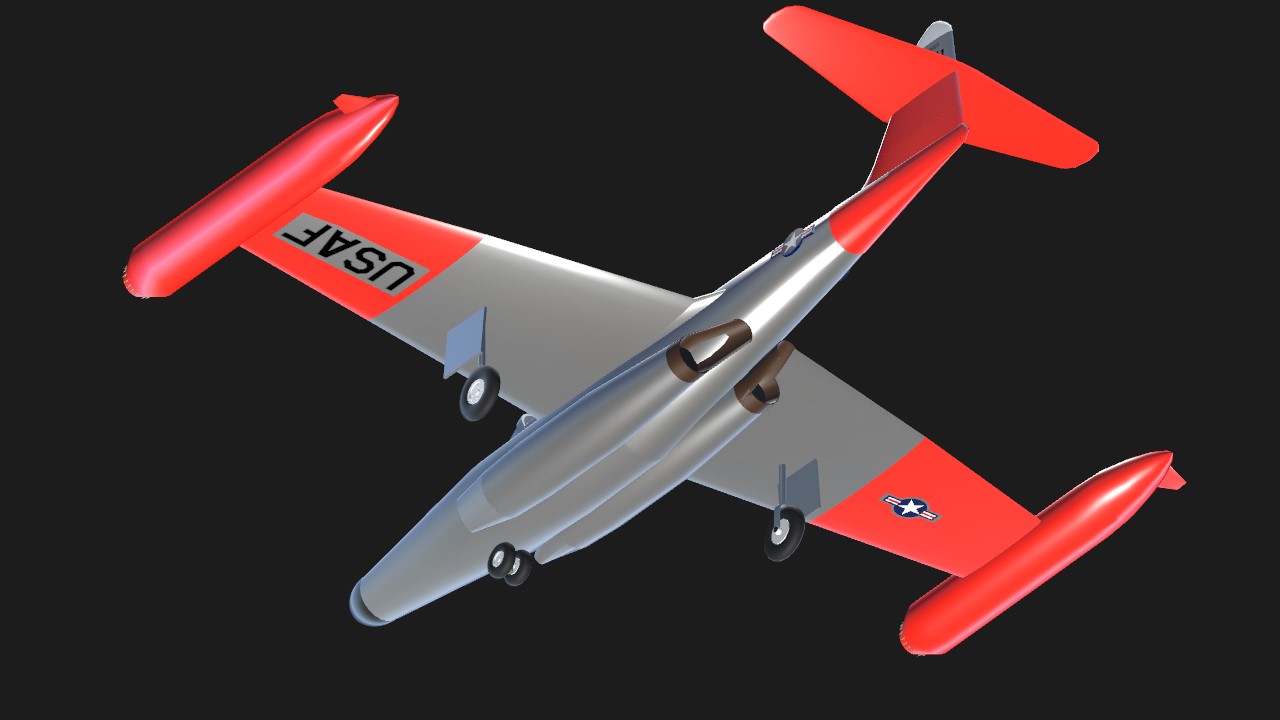
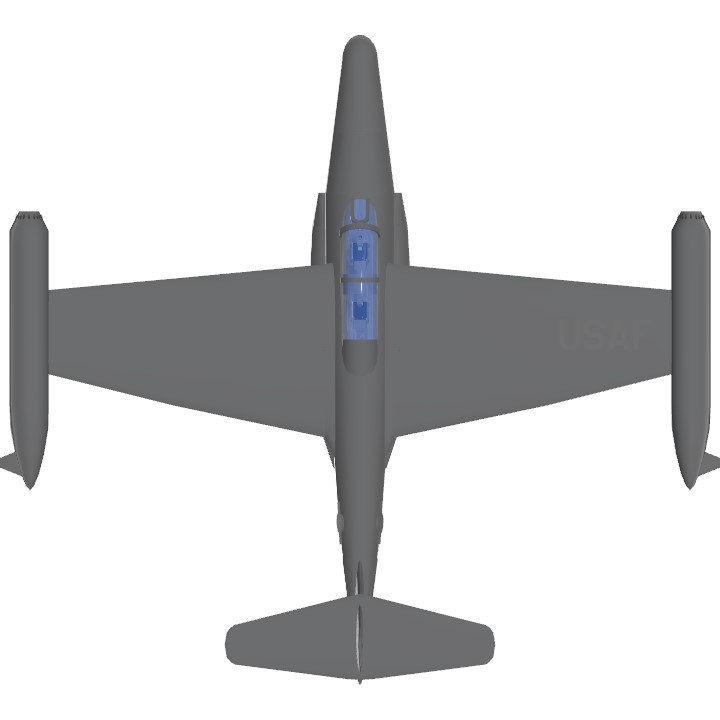
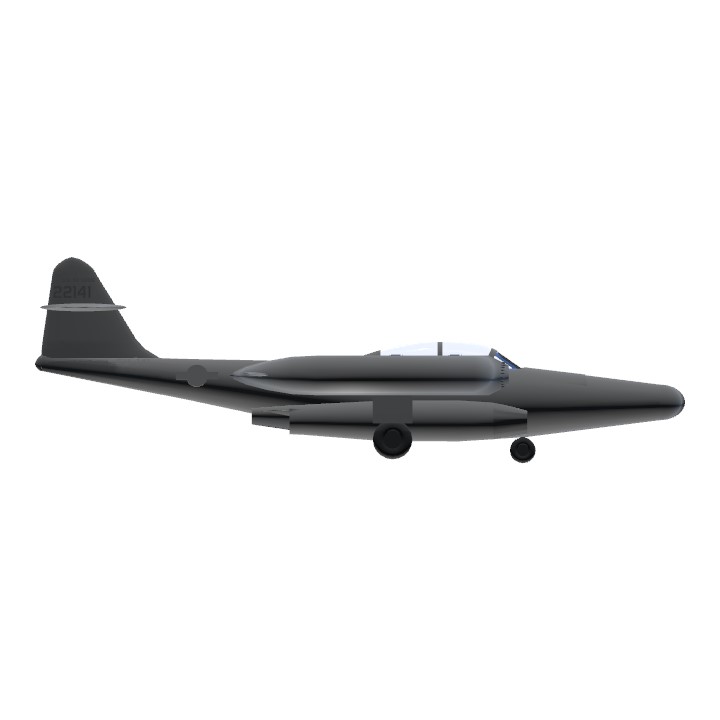

Love this build! I have a 1/72 model of this plane and I always thought the nose looked very SimplePlanes like.
Let me do it for you kermit
Greetings! About roll, you can use clamp((Roll/(IAS/135)), -1, 1,) for ailerons. It gradually reduces your aileron input beginning from 135 m/s IAS. But, I think that the roll rate should be pretty high, because those ailerons are quite large. Also, you can watch the Growling Sidewinder on youtube, namely his dogfights witg Mig-15bis and F-86 Sabre. In the DCS, the Sabre has an astonishing roll rate. I thought the Scorpion can have it as well.
I apologise if Irritated you in some way.
About flaps, I hope you found the hidden flapcanards in the nose?
@Rakoval500k Hey, I think the roll rate on your version is a little high and there's an odd part sticking out of the belly. But good insight about how to make the flaps effective, I'll be sure to use that on future builds :)
It has a flaws: namely the unworking flaps, unrealistic position of centers of mass and lift. Those flaps are really unworking: there's just sliced fuselage blocks, and no surface to simulate the lift increase flaps normally offer. The hidden wings have bjorken position and only a roll input. Here's even more realistic, FIXED VERSION, update pls! The apperance and part efficiency are awesome though.
Can you make one with guns please I love this aircraft
You made this before I was just about to post my own!,anyway, this is godly!
@Sharkdude300 ok lol
😂of corse not… 😏😞😔@Sharkdude300
@DragoransEscarti made the rockets as a subassembly and made use of mirroring, so "only" a half hour or so lol
@BreadIsAfruit Thrust, afterburner, and cruise speed of 465 mph at 10,000 ft are all accurately simulated. Mine is actually several thousand pounds lighter than the real thing, so if anything it overperforms. I hope you aren't basing your performance assessment on War Thunder :)
airplane is nice, but the flight model no, the f89 was actually quite agile, accelerates fast irl too, and it had good roll
The scorpion was flawed but a beautiful aircraft
How long did it take to place the rockets?
Amazing!